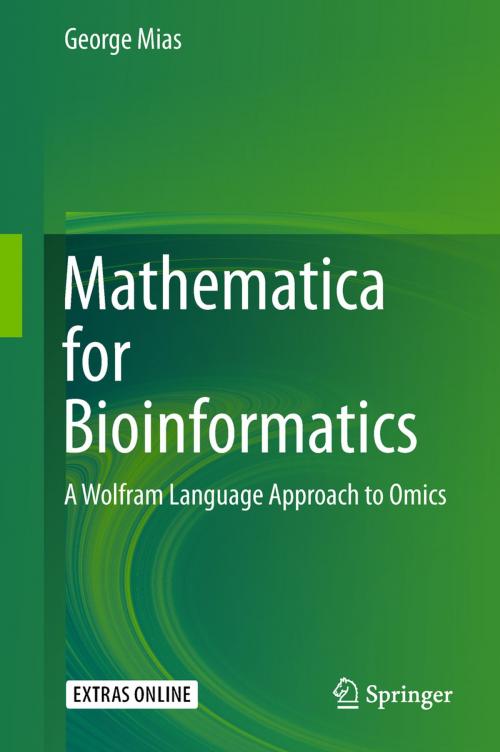Mathematica for Bioinformatics
A Wolfram Language Approach to Omics
Nonfiction, Science & Nature, Science, Other Sciences, Molecular Biology, Biological Sciences| Author: | George Mias | ISBN: | 9783319723778 |
| Publisher: | Springer International Publishing | Publication: | March 16, 2018 |
| Imprint: | Springer | Language: | English |
| Author: | George Mias |
| ISBN: | 9783319723778 |
| Publisher: | Springer International Publishing |
| Publication: | March 16, 2018 |
| Imprint: | Springer |
| Language: | English |
This book offers a comprehensive introduction to using Mathematica and the Wolfram Language for Bioinformatics. The chapters build gradually from basic concepts and the introduction of the Wolfram Language and coding paradigms in Mathematica, to detailed worked examples derived from typical research applications using Wolfram Language code. The coding examples range from basic sequence analysis, accessing genomic databases, differential gene expression, and machine learning implementations to time series analysis of longitudinal omics experiments, multi-omics integration and building dynamic interactive bioinformatics tools using the Wolfram Language. The topics address the daily bioinformatics needs of a broad audience: experimental users looking to understand and visualize their data, beginner bioinformaticians acquiring coding expertise in providing biological research solutions, and practicing expert bioinformaticians working on omics who wish to expand their toolset to include the Wolfram Language.
This book offers a comprehensive introduction to using Mathematica and the Wolfram Language for Bioinformatics. The chapters build gradually from basic concepts and the introduction of the Wolfram Language and coding paradigms in Mathematica, to detailed worked examples derived from typical research applications using Wolfram Language code. The coding examples range from basic sequence analysis, accessing genomic databases, differential gene expression, and machine learning implementations to time series analysis of longitudinal omics experiments, multi-omics integration and building dynamic interactive bioinformatics tools using the Wolfram Language. The topics address the daily bioinformatics needs of a broad audience: experimental users looking to understand and visualize their data, beginner bioinformaticians acquiring coding expertise in providing biological research solutions, and practicing expert bioinformaticians working on omics who wish to expand their toolset to include the Wolfram Language.















